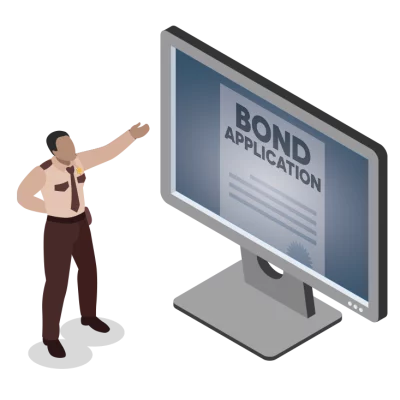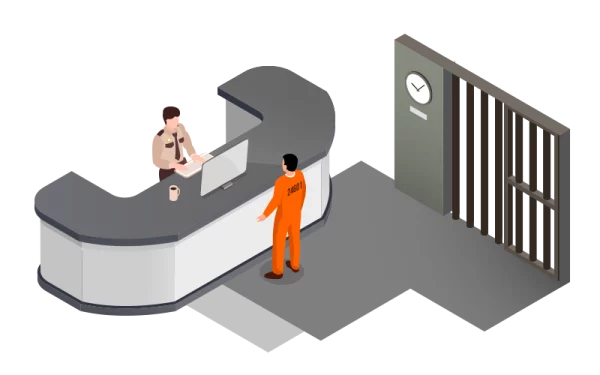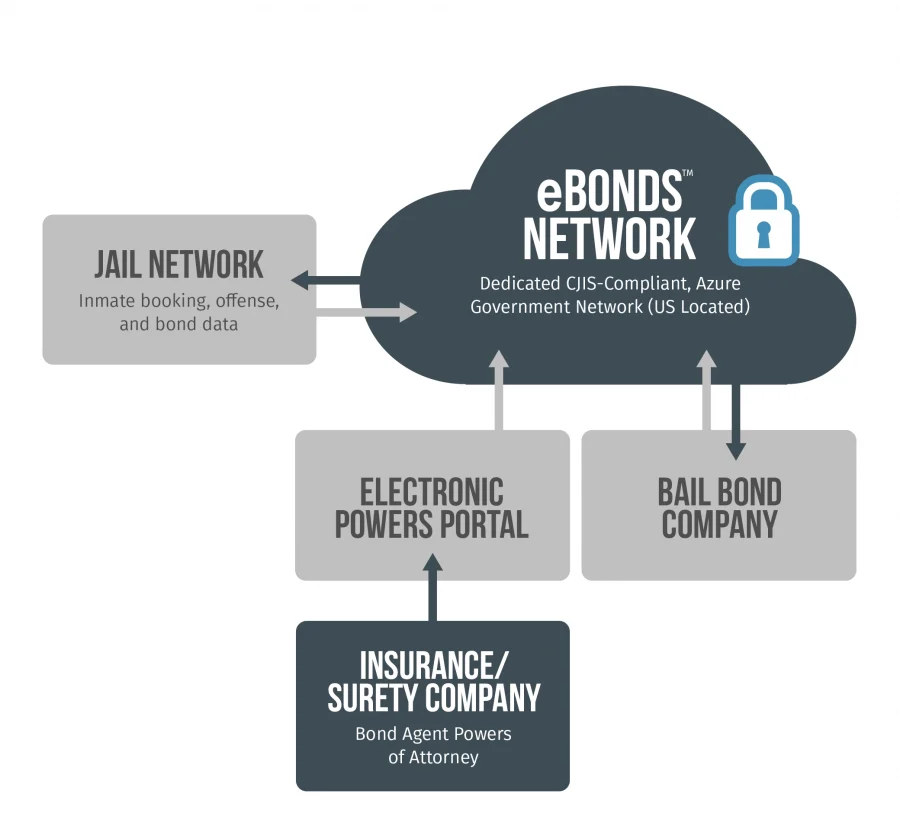How Does it Work?

The Process...
The eBONDS™ process begins with a Bail Bond Agent logging into the eBONDS portal, which is integrated into the jail’s JMS system, to create a bond application.
Once submitted, a Jailer reviews and certifies the bond application for book out.


The inmate signs the bond electronically and can then be released. Copies of the secure, signed bond documents are immediately available for the inmate’s jail record and the bond agent.
The Ins and Outs of eBONDS

Some Facts About eBONDS
What it Is
eBONDS is owned by a 30-year independent and private public safety software company located in Tyler, Texas.
eBONDS is implemented based on local decisions by local officials, bondsmen, and jail administration.
eBONDS facilitates electronic bond transactions between the bondsmen and the jail.
eBONDS is a secure, CJIS-compliant solution that connects the jail and bondsmen in the bail bond process.
What it Is Not
eBONDS is not affiliated with any insurance company, government entity, or other software solution (such as AIA or Tyler Technologies).
eBONDS is not accessed on a state or national level. Only locally approved bondsmen have access.
eBONDS is not a replacement for any local bondsmen or other software (such as Simply Bail or Captira).
eBONDS is not dependent on the most easily compromised forms or communication (such as email, fax, or paper).
A Quick Guide to Bond Types in eBONDS
Surety Bonds
Surety bonds can be backed by either insurance or collateral. For insurance-backed bonds, eBONDS connects directly to insurance carriers through a separate portal, allowing bonding companies to receive electronic powers of attorney instantly, and removing the need for paper bonds and POA documents. With eBONDS, bonding agents can submit the bond, bond fees, and Power of Attorney for an inmate to the jail electronically, all at once. The jail then reviews and approves the documents through eBONDS. Once approved and signed by the inmate, the bonding company gets certified digital copies of the bond, Power of Attorney, and receipt. Administrators can also track their company’s collateral or electronic powers limits and allocations in real time.
Recognizance Bonds
Similar to a Pre-Trial Bond, and also known as OR, ROR, or Personal Bond, Recognizance Bonds can be completed through eBONDS. Typically, the jail receives a court order or an authorization to release an inmate based on specific charges. The jail updates the bond type in their Jail Management System (MS), logs into eBONDS, selects the inmate and charges, documents who authorized the release, and completes the bond electronically in eBONDS.
Attorney Bonds
In the State of Texas, a licensed attorney assigned to or retained to represent an inmate can post a bond, acting as the surety. Once the jail approves, attorneys can log into eBONDS, like a bond company would use eBONDS, and post their bond electronically. If the county chooses to accept in-person attorney bonds only, the jail officer can initiate and complete the bond in eBONDS.
Property Bonds
In some jurisdictions, a property owner can offer their home, business, or land as collateral instead of paying a bond The process varies by jail but typically requires the owner to bring appraisal and mortgage documents to the Clerk’s Office for approval and certification. These approved / certified documents are then presented to the jail, where a jailer initiates the bonding process in eBONDS. The jailer selects the inmate for whom the bond is being posted and enters the required information, such as the property owner’s name, address, and the property’s value or equity. The bond is then completed, and the inmate electronically signs the bond. The county or parish then places a lien on the property used as collateral.
Cash Bonds
In some jurisdictions, a property owner can offer their home, business, or land as collateral instead of paying a bond The process varies by jail but typically requires the owner to bring appraisal and mortgage documents to the Clerk’s Office for approval and certification. These approved / certified documents are then presented to the jail, where a jailer initiates the bonding process in eBONDS. The jailer selects the inmate for whom the bond is being posted and enters the required information, such as the property owner’s name, address, and the property’s value or equity. The bond is then completed, and the inmate electronically signs the bond. The county or parish then places a lien on the property used as collateral.